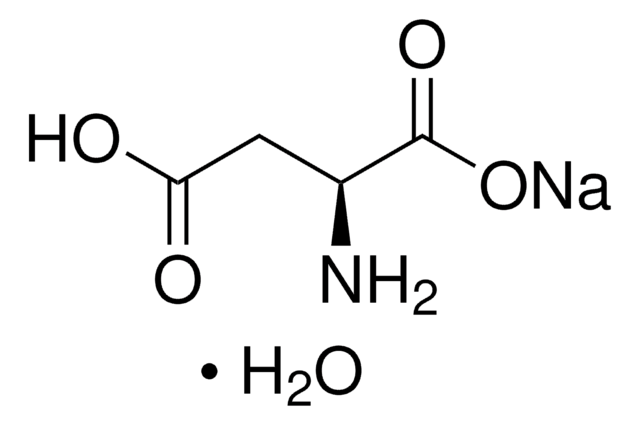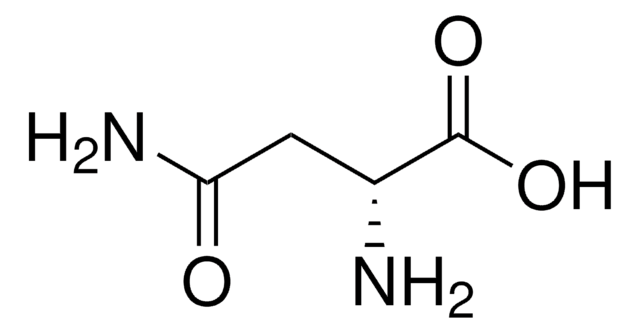A8381
L-Asparragina monohydrate
≥99% (TLC)
Sinónimos:
4-Amida del ácido(S)-2-aminosuccínico, 4-Amida del ácido L-aspártico, Ácido (S)-(+)-2-aminosuccinámico
About This Item
Productos recomendados
product name
L-Asparragina monohydrate, ≥99% (TLC)
biological source
synthetic
Quality Level
assay
≥99% (TLC)
form
powder
color
white to off-white
mp
233-235 °C (lit.)
application(s)
cell analysis
peptide synthesis
SMILES string
[H]O[H].N[C@@H](CC(N)=O)C(O)=O
InChI
1S/C4H8N2O3.H2O/c5-2(4(8)9)1-3(6)7;/h2H,1,5H2,(H2,6,7)(H,8,9);1H2/t2-;/m0./s1
InChI key
RBMGJIZCEWRQES-DKWTVANSSA-N
¿Está buscando productos similares? Visita Guía de comparación de productos
General description
Application
- as a component of Sauton′s and chelated Sauton′s media for mycobacterial growth
- to test its effect in the induction of Ca2+ flux in rice roots using aequorin luminescence imaging
- as a component of fermentation medium for the Blakeslea trispora spores
Biochem/physiol Actions
Storage Class
11 - Combustible Solids
wgk_germany
WGK 1
flash_point_f
Not applicable
flash_point_c
Not applicable
ppe
Eyeshields, Gloves, type N95 (US)
Certificados de análisis (COA)
Busque Certificados de análisis (COA) introduciendo el número de lote del producto. Los números de lote se encuentran en la etiqueta del producto después de las palabras «Lot» o «Batch»
¿Ya tiene este producto?
Encuentre la documentación para los productos que ha comprado recientemente en la Biblioteca de documentos.
Los clientes también vieron
Nuestro equipo de científicos tiene experiencia en todas las áreas de investigación: Ciencias de la vida, Ciencia de los materiales, Síntesis química, Cromatografía, Analítica y muchas otras.
Póngase en contacto con el Servicio técnico









